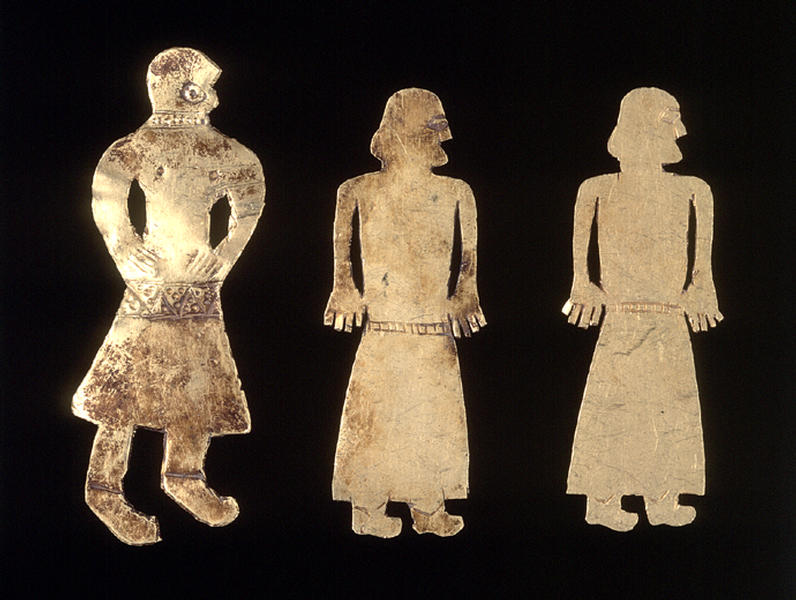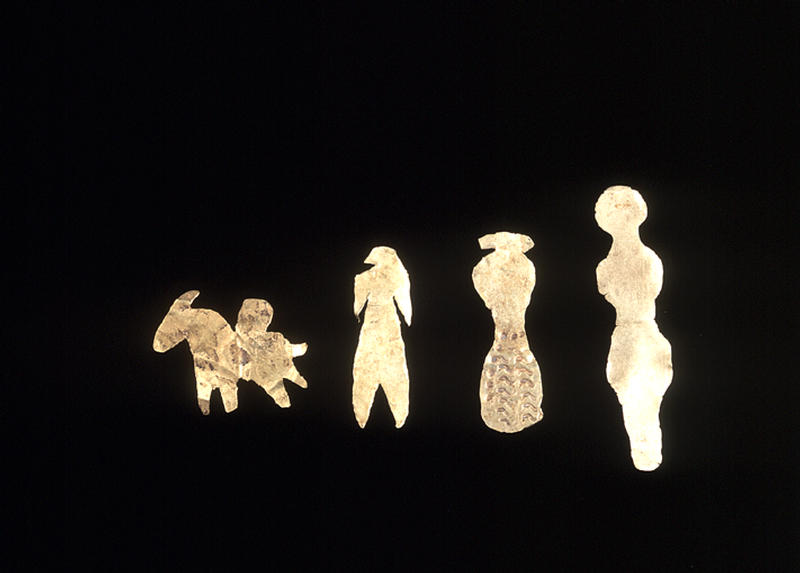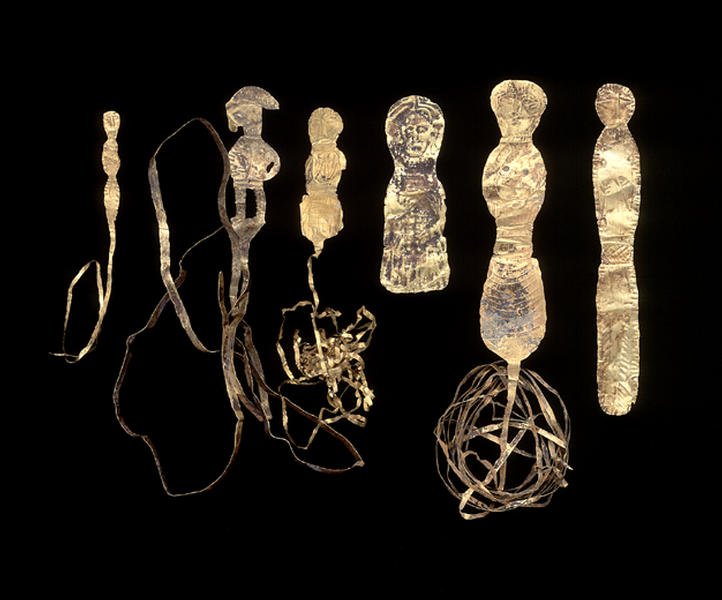Offering Plaques
- 5th - 2nd century B.C.
- Gold
Catalogue Entry
5th‐2nd century B.C.
Gold
(a)H. 5.5 cm, W. 1.9 cm(b)H. 5.0 cm, W. 1.8 cm
cH. 5.0 cm, W. 1.8 cm(d)H. 1.9 cm, W. 1.2 cm
(e)H. 2.1 cm, W. 0.7 cm(f)H. 2.4 cm, W. 0.8 cm
(g)H. 3.3 cm, W. 0.8 cm(h)H. 3.6 cm, W. 0.6 cm
(i)H. 4.6 cm, W. 1.7 cm(j)H. 4.1 cm, W. 1.5 cm
(k)H. 6.2 cm, W. 2.2 cm(l)H. 8.7 cm, W. 2.1 cm
(m)H. 10.0 cm, W. 1.5 cm
These are silhouettes of human or animal figures cut from gold sheets.
Figure a shows a male wearing a knee-length tunic, with both hands at his hips. The figure faces to the right and one eye, the necklace, nipple, hand, and belt are incised on the figure. The eye is pressed with a small circle, and the necklace is similarly dotted, while the belt is shown as a linked triangular design and dotted.
Figures b and c are essentially the same shape and show a male figure wearing a garment that hangs to his heels. Both eyes, hands, belt, and shoes are incised.
Figure d shows either a donkey with baggage on his back, or a rider on a horse. The figure of the rider is missing from neck up.
Figures e through g are human shapes cut from gold sheets. Figure f has its lower section decorated with incised and stamped designs.
Figure I shows a figure of a priest cut from a sheet of gold. He is facing to the left and a band extends from the bottom end of the plaque. The priest has both hands at his hips, he wears a kyrbsia headgear, a short tunic, trousers and short boots. The nipple, necklace and trousers are dotted, while the wrinkles on his sleeves are linear incisions.
Figures h and j through m all are human figures facing forward, with their heads, torsos and lower bodies shown as three swelling forms. Figures h, j, and l have bands extending from the bottom. Figures h, j, l, and m have their nipples shown by dotting, and both arms at their chests. Figures j and l have their feet depicted in linear incisions.


